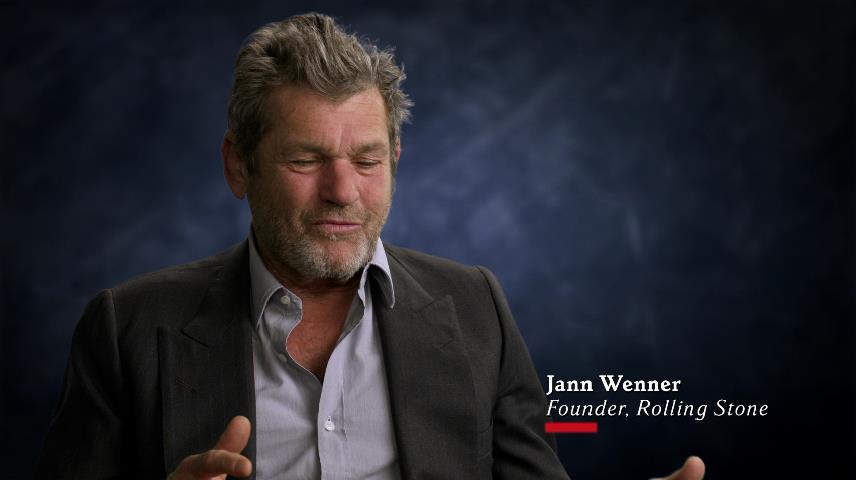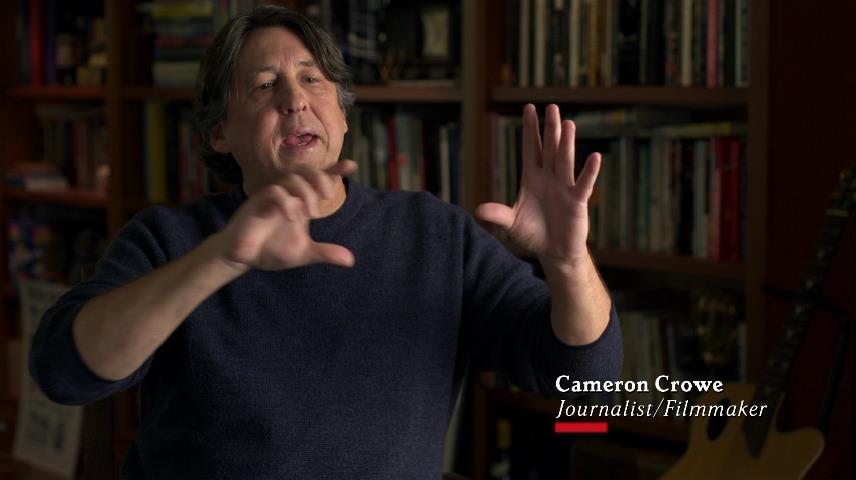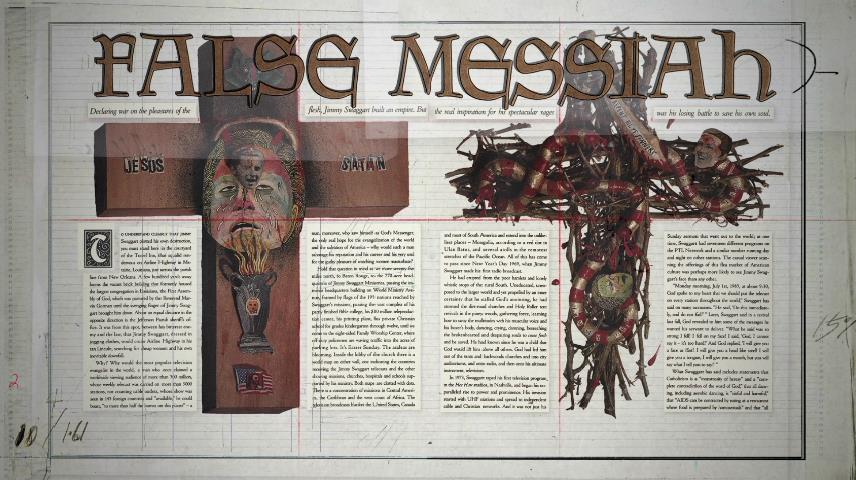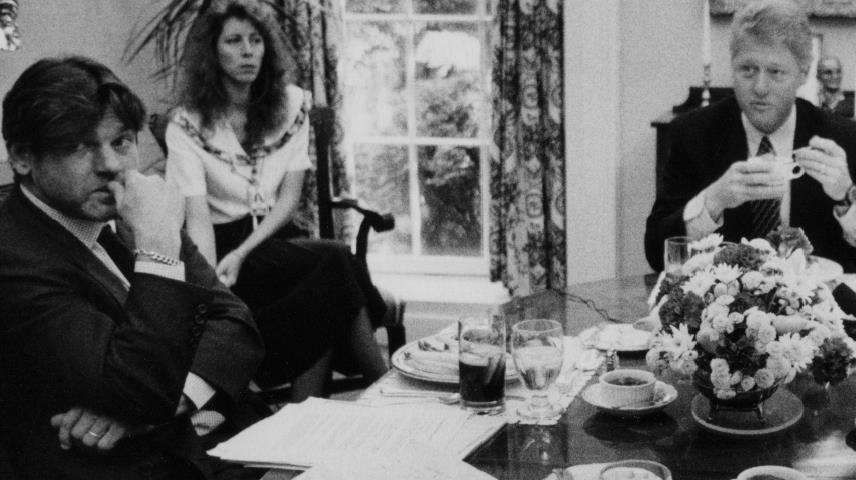| Reviews & Columns |
|
Reviews DVD TV on DVD Blu-ray 4K UHD International DVDs In Theaters Reviews by Studio Video Games Features Collector Series DVDs Easter Egg Database Interviews DVD Talk Radio Feature Articles Columns Anime Talk DVD Savant Horror DVDs The M.O.D. Squad Art House HD Talk Silent DVD
|
DVD Talk Forum |
|
|
| Resources |
|
DVD Price Search Customer Service #'s RCE Info Links |
|
Columns
|
|
|
Rolling Stone: Stories From The Edge
Rolling Stone published its first issue in 1967, and every ten years since (excluding its 30th) it's done something video-related to commemorate the anniversary. Its tenth year was celebrated on CBS in a rather awful variety show format that left viewers scratching their heads. Flash forward to 50 years, and this time it's done a series of six 40-minute episodes for HBO (hence no censorship as there would be on network TV) that takes a more down-to-earth look at the magazine which started out as a look at pop culture and politics for the "rock and roll generation" and has tried to hang on to that ever since as that generation and the rest of the world changes. I first read the magazine in the 1980s at the public library, and was struck at its honesty compared to the more mainstream magazines like "People" which basically served to give things free publicity. The album reviews were pretty valuable, given the limited variety on radio and of course no internet then- though I specifically remember them trashing Men Without Hats' "Rhythm of Youth" album and saying that their lead singer was "bad", yet that remains one of my favorites from that era. Still music is extremely subjective, and I'm a believer in the expression "talking about music is like dancing about architecture"- in fact the same can sometimes be said for movies. While I didn't pay much attention to the magazine's political articles, they seemed to be more straightforward than conventional "news" magazines- and in every case, the writers were free to use profanity when it was banned in pretty much any other mass media. Then of course there were all the ads for audio and video equipment that I could never afford but only lust after.

The approach for this series has been to start out with a brief history of the magazine and its founders, but then focus mainly on key articles that were published that really made an impact, or are at least most remembered by the current staff. The first episode tells us a bit about how the magazine was started in San Francisco by Jann Wenner and his now-wife Jane, along with Ralph Gleason- "Sort of a magazine, and sort of a newspaper", "not just about music, but also about the things and attitudes that the music embraces." Wenner mentions that he was passionate about music and tried to play it himself but found he simply lacked the talent for it, but he did have the talent for journalism to express that passion. From here on we mostly go from one article to another that those on-screen remember, more or less in chronological order. The first is an early story about groupies, accompanied by some vintage revealing film footage of some of them- one talks about an encounter with Jimmy Page. The basic format all of these stories follow here is a glance at the original pages, most of them clear enough to freeze-frame and read a bit of, as Jeff Daniels reads passages. Often the view zooms in to extreme close-ups of the printed photos, revealing the masses of dots that made them up on the page. Relevant film or video footage is also shown if available.
Over the course of four hours, we touch on a wide number of subjects: The Beatles of course, but also coverage of the 1972 elections which was the first presidential vote with the age lowered to 18. Rolling Stone pushed for Democrat George McGovern, who of course lost to Nixon. Hunter S. Thompson covered that year's presidential campaigns as well as other material for the magazine, his writings are read by Johnny Depp who played him in the movie of Fear and Loathing in Las Vegas. Future director Cameron Crowe fanatically followed and documented rock groups while still in high school, and often had to get written notes from the magazine as legitimate excuses for missing classes. The music business got big in the 1970s but some felt that rock was selling out- enter punk. Photographer Annie Leibovitz recounts her photo session with John Lennon and Yoko Ono, hours before he was murdered. By the 1980s many of the "anti-establishment" types of the late 60s were accused of becoming part of the establishment themselves- Wenner included. He even ran print ads appealing to potential advertisers telling them not to look at readers as aging hippies holding onto the 60s but affluent 80s citizens. By this point in viewing, it's clear however that we're not watching a start-to-finish recap of the last fifty years, as large chunks of popular culture are missing. The disco craze of the late 70s isn't even mentioned, Elvis Presley's death gets only a couple minutes, and there really isn't a whole lot of significant music material from the 1980s either. The amount of time spent on each featured article greatly varies as well. Some are given roughly a minute or so, others go on much longer and more in-depth- a good deal is spent on the 1974 kidnapping of Patty Hearst for example, and the most notable 1980s segment deals with televangelist Jimmy Swaggart who first successfully campaigned to get Rolling Stone and other rock music-related magazines out of Wal-Mart stores for corrupting America's youth, but was then disgraced after being caught with a prostitute. An article printed at that time doesn't just call out his hypocrisy but also tries to explain what drove him to it. (This was a story I was oddly fascinated with at the time; disappointingly they don't follow up on how Swaggart has since made it back onto TV with his own 24-hour network carried on many broadcast stations.
The 1990s are touched on with writer Alan Light championing the rise of hip-hop while regretting how the rest of Rolling Stone seemed slow to share his enthusiasm- he recalls that Nirvana got on the cover after one hit, but rap artists with more hits than that still had never been featured. That decade ended with the return of "teen pop" and how the magazine chronicled Britney Spears' rise and fall. Acknowledging that not everything they've done has been great, the "Rape on Campus" article is featured which featured accusations that turned out not to be true. The series ultimately closes out with the election of Donald Trump as president, and thoughts on what might be learned from that and speculation on what's to come next. Again, this is a very selective look at certain articles and events and not a complete review from 1967 until now- it's like meeting up with these writers informally and the conversation naturally shifting to specific things they have on their minds. In the end there were many areas that I wished had been touched on, but I at least got the feeling of what was most important to the magazine's staff to be included here.

While I have to commend Shout Factory for releasing this series on Blu-Ray disc as many such programs have been limited only to standard DVD, I do have to point out my main issue with this series was how the video footage was handled. The entire series was produced at 24 frames per second and the discs are encoded that way; much current documentary video footage is intentionally shot in 24fps for a more "cinematic" look. I've never been a big fan of that for anything other than narrative movies however, and additionally all of the older video footage and any TV footage that was shot at 30 frames per second is still shown here at the reduced frame rate, often looking choppy. The early portions include material shot on black and white early portable videotape systems, the first ones available to people outside TV production, and while these could have looked almost like live video unaltered they appear more like old film here. Had I produced this series, I would have insisted on its native format being 60fps so that this material could be seen as it originally was while still allowing for a lower frame rate on the footage shot for this series. The quality of footage varies as well- the best-looking is Super 8 and 16mm film footage from the 1960s and 70s that has been newly transferred in high definition. Other film and video footage appears to have been taken from YouTube uploads, as they are rife with compression artifacts. It doesn't seem like a lot of effort was put into finding some of the video footage either- the worst offender is a clip from the Arsenio Hall Show in the 1990s, with a surprise appearance from Bill Clinton playing saxophone. This appears to have been taken not only from an online upload, but also from a bad quality VHS home recording with mono sound. Certainly the master tapes for this show still exist and could have been used instead? There's even a hi-def clip from the Talking Heads concert film Stop Making Sense that looks OK except for rather choppy motion. (I've seen that film hundreds of times, I know how it should look.)
Regardless, anything produced within the past decade should automatically be released on Blu-Ray disc, and this is certainly the way to watch this series. As mentioned before, the resolution is best taken advantage of by being able to pause on and actually read many of the articles that are shown onscreen. This likely would be a lot more difficult on standard DVD.
The 5.1 audio mix, as with most productions done for cable or broadcast TV, doesn't really take advantage of the format. Most of the sound is kept up front, with the many songs used mixed into the 3 channels and not keeping narration isolated in the center. I only noticed two instances where the surround channels were used for sound effects. This likely won't suffer much in downmixing on a 2-channel system, but nonetheless a second conventional stereo track is also included, both tracks encoded in DTS Master Audio. Hearing-impaired subtitles are included as well.
I do have to humorously add here that this reminds me of some audiences who seek out music programming with just music and no interview footage. (When I worked as a customer service representative at Tower Records' 800 number, a frequent caller would ask for music DVDs with "no talkin'!") I would warn them to steer clear of this as there are many great music performance segments included, but they last literally seconds before cutting away to talking. Some talk-heavy music documentaries have still allowed performance clips to play complete, unedited and uninterrupted, but that certainly isn't the case here.

The only extras are advertised as "extended interviews" but each lasts only about 3 minutes- individual clips from Jane Wenner, her son Gus, Cameron Crowe, Ice-T, illustrator Victor Juhasz (who shows how he usually draws Donald Trump), Janet Reitman and Matt Taibbi, each just adding a few extra words that somehow didn't fit into the main program.

While this series falls a bit short of the front cover's claim of "50 years of defining culture" and much of the archival footage doesn't look as good as it could have, it's still a very entertaining watch for aficionados of pop culture history and easily Recommended.
Jesse Skeen is a life-long obsessive media collector (with an unhealthy preoccupation with obsolete and failed formats) and former theater film projectionist. He enjoys watching movies and strives for presenting them perfectly, but lacks the talent to make his own.
|
| Popular Reviews |
| Sponsored Links |
|
|
| Sponsored Links |
|
|
| Release List | Reviews | Shop | Newsletter | Forum | DVD Giveaways | Blu-Ray | Advertise |
|
Copyright 2024 DVDTalk.com All Rights Reserved. Legal Info, Privacy Policy, Terms of Use,
Manage Preferences,
Your Privacy Choices | |||||||













